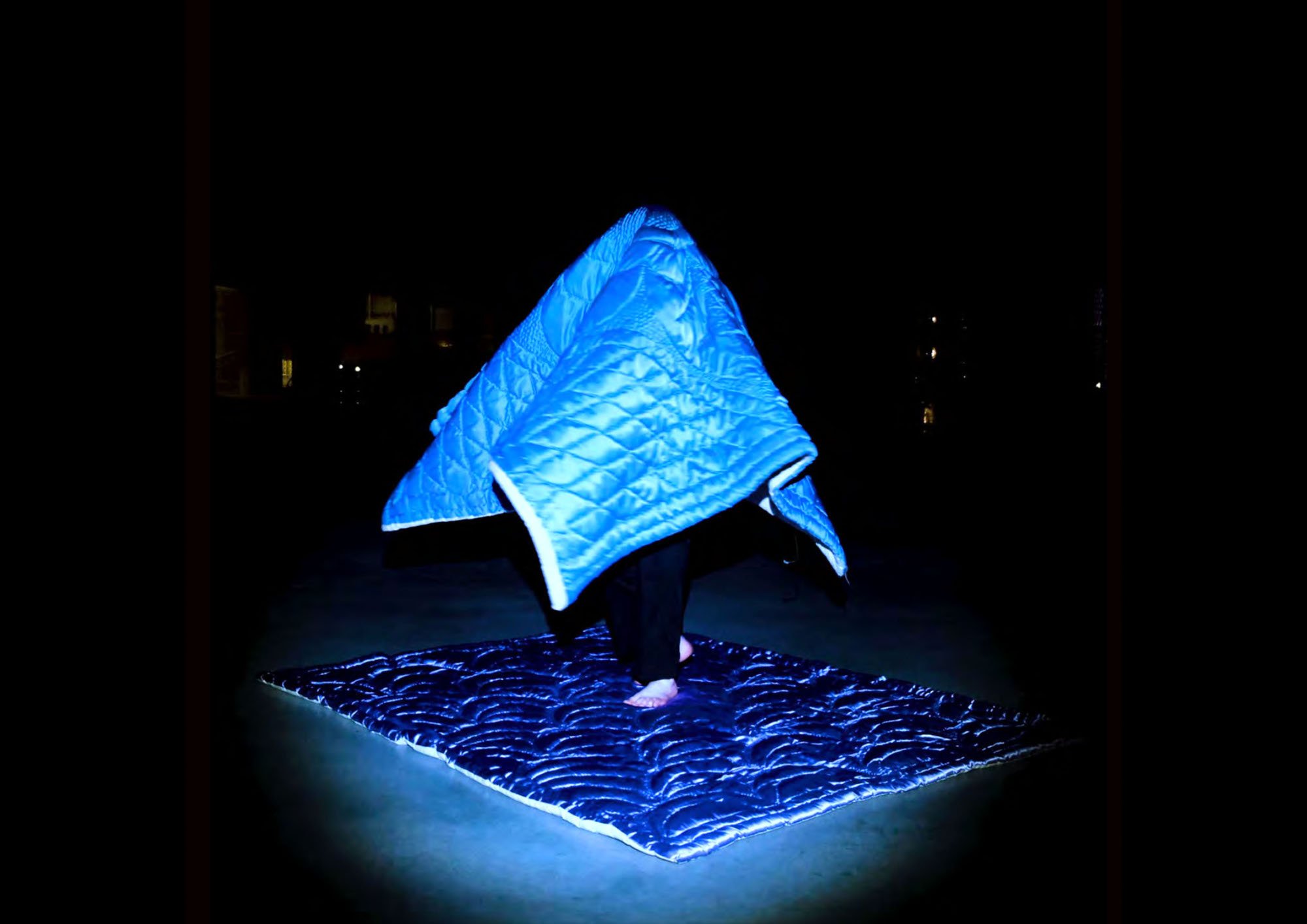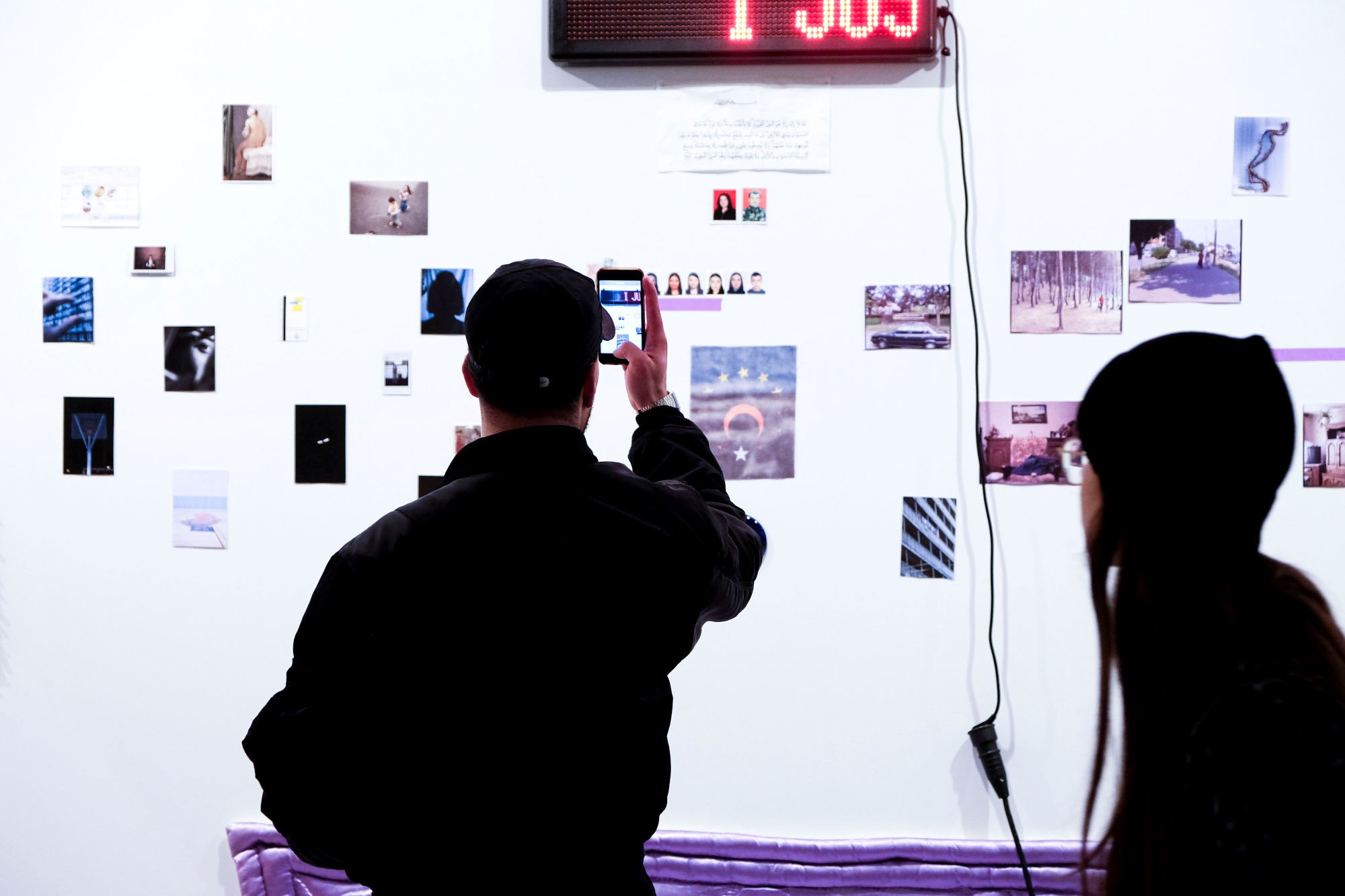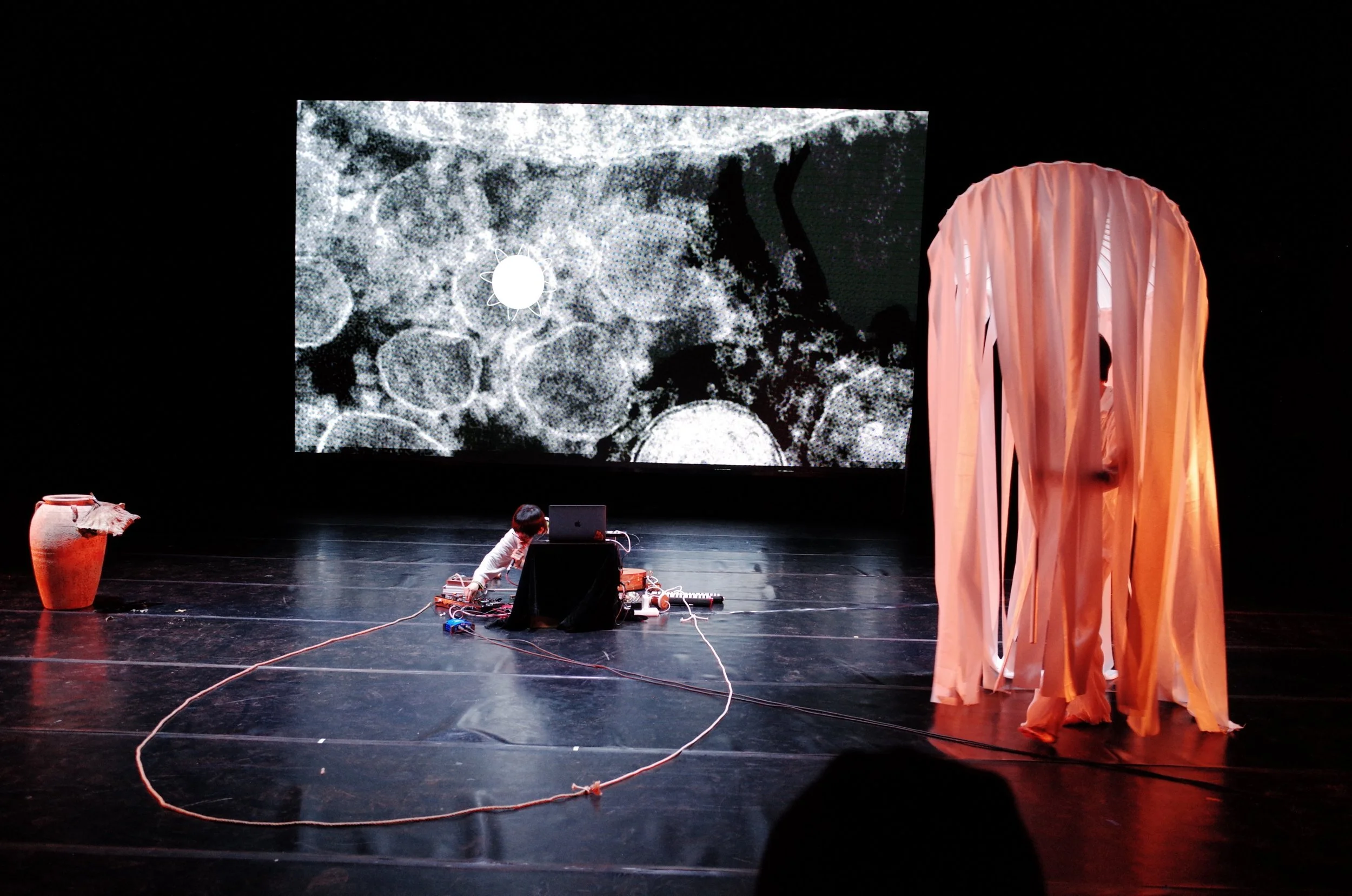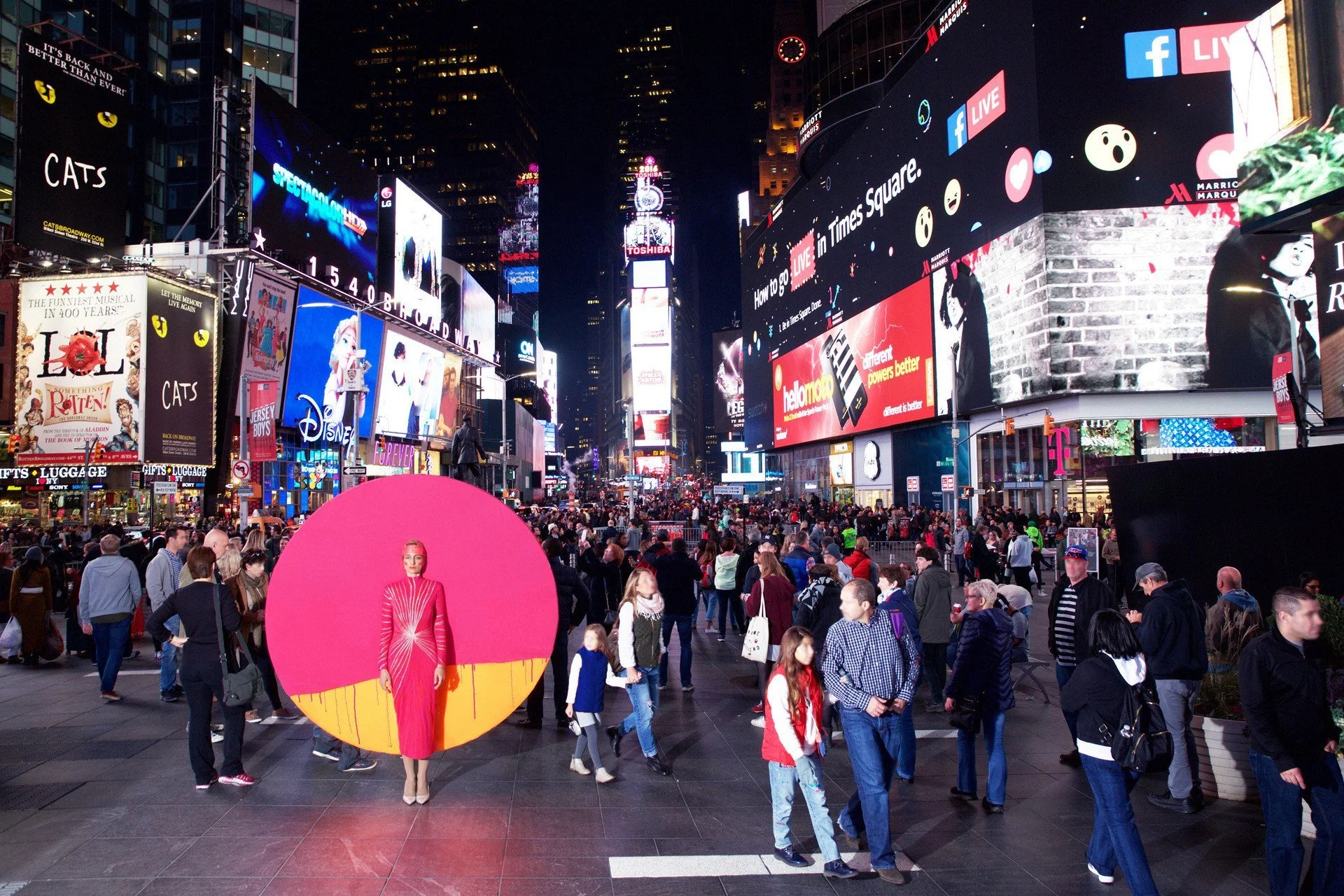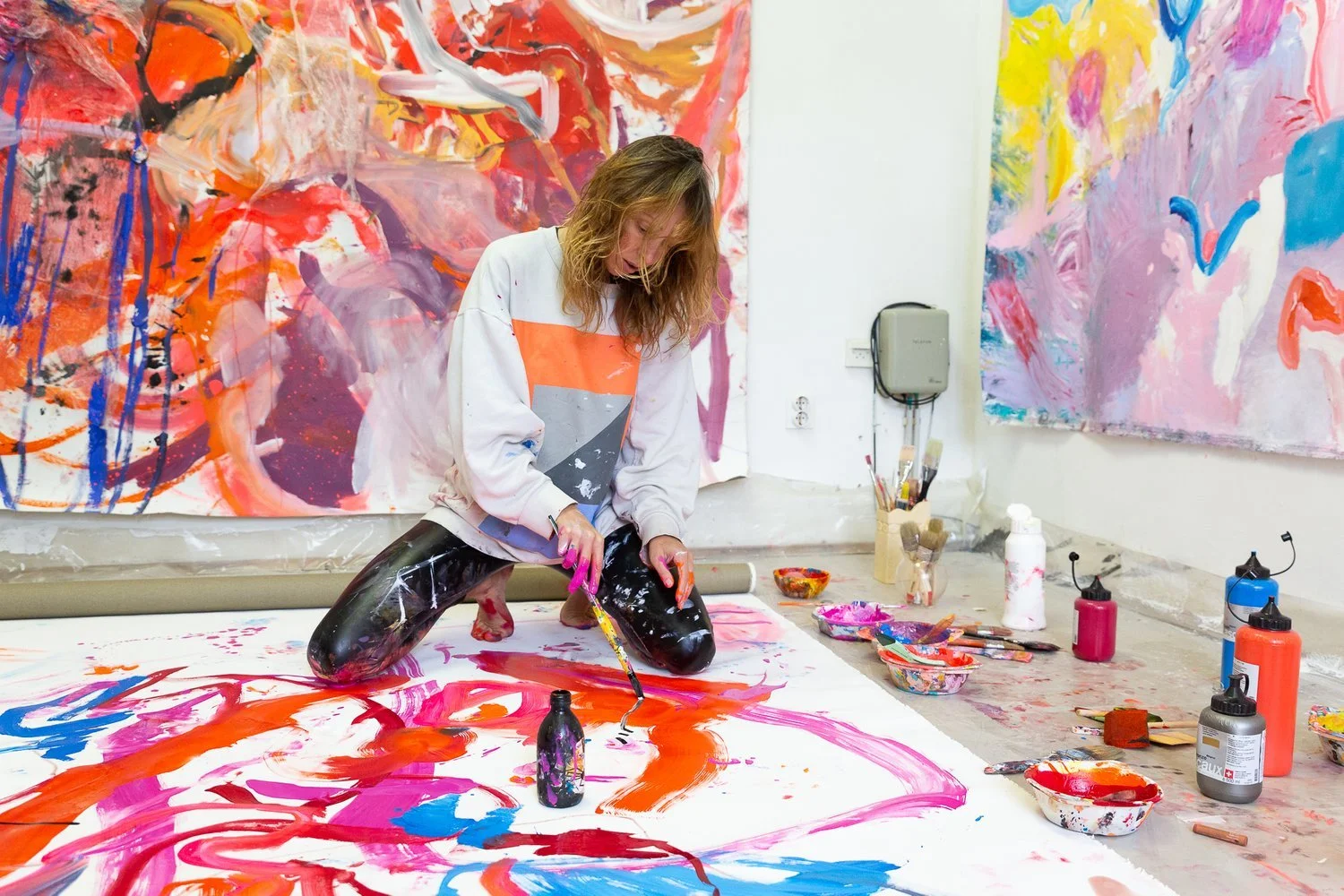INTERVIEW | Gülsah Ayla Bayrak
10 Questions with Gülsah Ayla Bayrak
Gülsah Ayla Bayrak (1997) is a multidisciplinary artist from Belgium.
She studied Visual arts at Luca School of Arts and did an exchange in South Korea at the Korea National University of Arts as a Fine arts student. Ayla has roots in Turkey and Georgia, which influenced her work drastically. The artist creates connections between east and west and tries to overcome the imaginary border between the two continents. The artist focuses on Individual experience, cultural diaspora, and society's role in her life.
Gülsah Ayla Bayrak - Portrait by Eva van Aken
ARTIST STATEMENT
“Perhaps we could arrive at a different understanding of what migration entails today: It is not just the act of physical travel and motion between two places, but rather, the erosion of the idea of place as a whole. In the work of Gulsah Ayla Bayrak, an artist from Belgium with roots in Turkey and Georgia—historically ancient but politically young and volatile, we can experience this motion between places less as a trajectory and more as an interruption. Sometimes Gulsah looks at an object—a fountain, a piece of fabric, a woven carpet, and transforms their meaning without changing the composition. What is happening there is not that she’s trying to destroy or obscure the meaning, but changing or removing the context, sometimes humorously, adds unexpected layers. The memories of domestic objects we own, journeys, and cultural situations become almost helplessly unstable. During a recent stay in Istanbul, the artist navigated this sense of displacement the other way around: It’s the return to an ancestral homeland that one finds absurd, often incomprehensible, and a random act in an interminable comedy. Her snapshots from there strike the viewer as almost unreal, but you have to wonder then whether these boundaries between blur and fact are in the world, or are they perhaps in the eye behind the camera? As she tells the story of her father, her own migration story becomes something larger than the facts: It is a place of transformation, and the story is being reinvented the moment it is remembered.” - Ari Amaya-Akkermans for Gulsah Ayla Bayrak
The Daughter of Rumi - Abdest, performance, 2021 © Gülsah Ayla Bayrak
Get your limited edition copy now
INTERVIEW
First of all, could you tell us a little more about your background and how did you begin making art?
I grew up in Genk, a small city near the Dutch and German border. We lived on the industrial site of the town, where all the houses looked the same, but the people who inhabited were from different places in the world. This resulted in me growing up with a very diverse friend group. I remember the first eight years of my life playing outside from sunrise until sunset. Because my dad could not work because of his illness, he dedicated his time to capturing my friends and me with his camera. You could see me imitating my dad and taking pictures like him in those videos. I photographed and filmed my surroundings for the longest time I could remember.
When did you decide to become an artist? And what do you wish you knew about contemporary art before you got started?
At the age of 14, I started my art education in college. I must say that I lacked a lot of basic knowledge because art was never seen as a needed subject in my family and surrounding. But because I was keen on more learning, I started my research in the arts and tried to visit as many museums as possible around me. So I could catch up fast and move on with the information I had received. It wasn't very easy for me to live as an artist since there were different expectations of how I would lead my life. This made everything much harder, and I always felt like I was running behind with everything. But because of this feeling, I always tried to find new solutions and options to move on instead of giving in. It would have been interesting to have learned art history from contemporary art and then backward. Because sometimes, I have hardship in letting go of the past.
The Daughter Of Rumi - Al Kiz, performance, 2022© Gülsah Ayla Bayrak
Despite still being really young, you have already had significant international experiences. What did you learn from these different environments? And how did these influence your practice?
Growing up with a diverse group of friends made me fall in love with cultures. We used to eat Italian food with our friend's nonna. Dance to Marokkan music at weddings and listen to Iranian poetry narrated in the mosque when we had Qoran lectures. I was fascinated by the differences each culture had and was keen to experience them. In the second year of my BA education, I had the chance to do an exchange. I was selected for SVA in New York City and the Korea National University of Art in Seoul. I chose to do my exchange program in South Korea to connect with the far east. This experience shaped me in a significant way. The education I received at K-arts was given from an Eastern perspective allowing me to understand A small piece of Asia. This was the first time for me to deepen myself in Korean and Asian art. The way these artists expressed themselves was very new to me. Everything was different, the lifestyle, environment, communication, and process of creating. Seoul was a place that shaped me with its intense culture, history, nature, and flavours. This experience allowed me to construct this third person living in me—the most foreign self, where I started to work from.
Further, I was able to do a residency in Istanbul, where I came in contact with artists from the middle east. It was a terrific experience to see their work and talk about their ideas and perspectives. Embracing diversity and cultures enriched my art practice and shaped in a way my storytelling methods. I have a good base in western and eastern arts; this helps me create work for a broader audience and allows me to reach my goals.
Your work is influenced by your cultural roots, closely linked to Georgia and Turkey. How do these influence your work?
Growing up, I always missed Turkey. I did not belong to one home. Instead, I had places that fed my need for a home. But then you also had Georgia; I lost complete contact with it. I can't speak the language, nor do we have contact with our families there. The constant feeling of being half influenced me to fill this gap. I love using traditional materials and try to give them a contemporary meaning to it. By doing this, I don't change the purpose but rather show my emotional presence. Being Bicultural is always leaving something and longing for something. I think that's the way my senses are also very sharp. Because I am constantly searching for my roots, for example, when I walk through a shopping mall and smell something that I used to smell in Turkey, this triggers a lot of emotions. I try to influence my audience to remember this illusionary longing for something they have in their memory.
The Daughter of Rumi - Aya, performance, 2018 © Gülsah Ayla Bayrak
The Daughter of Rumi - Nazar, Performance, 2020 © Gülsah Ayla Bayrak
Another key idea behind your work is that of cultural diaspora. In a globalized world like the one we live in, it is a fundamental theme to address. Do you think we run the risk of losing our identities and cultures in our current society? Or do you wish to blend different influences, like eastern and western culture?
I think that instead of isolating ourselves in one culture, it will be very enriching to be in contact with each other through it. I believe that it's essential to know your culture and take the time to understand another. Recently I started my research on the possible idea of Eurasia. The future somehow forces us to expand our knowledge and work together. Those who are putting effort into this matter will be critical individuals in communication between different areas, understandings, and ideas. I don't believe that culture stands on its own. It is hard for me to think that culture is authentic when we are pretty sure that even a person cant be pure blood at this point. We are constantly influenced by each other, which has never been indifferent to centuries. Globalization will be a tool to expand ourselves faster and give us opportunities to grow more open. I don't think cultures will be wiped out, but instead, we will have extra options while proceeding with our daily life activities. For example: when eating rice and some vegetables, you will now crave Kimchi alongside it and be satisfied after eating it.
Can you tell us about the process of creating your work? What aspect of your work do you pay particular attention to?
I think in today's world, art is seen as something inaccessible. I believe art is an experience and must be used as a source that can stimulate the senses. I always create from something I experienced, whether this is something emotional or physical. From that, I try to understand and translate it into an object, an image, or a video. It is essential that a person can interpret my art regardless of its background. When a person from China and Congo stands in front of my work, I want them to experience it from their point of view and maybe even find something that they can share at the end.
The Daughter of Rumi - Digital Rumi, 3D graphic, 2019 © Gülsah Ayla Bayrak
Let's talk about the art world. What are your thoughts on digital presentations and online exhibitions? Did you take advantage of these new forms of promotions over the past couple of years to present your work to a broader audience?
I don't enjoy exhibitions on an online platform, but it does give artists the possibility to reach the international public more accessible. I like the idea of traveling for art and meeting people during these trips. I like technology to create art. Recently, I have started 3D scanning and trying to make paintings/pictures with them. It also gives the artist the freedom to build whatever they want, and that is such a fantastic feeling. You don't need money to buy a specific material; you can create them in a program. The endless possibilities do excite me a lot. I am starting to get information about NFTs, and I'm willing to make some in the future.
And what about future plans? What are you working on now? Anything exciting you can tell us about?
I am working on my project Bloody Hamam, four-year research about orientalism. I plan to complete it by 2023 when the Turkish Republic is 100 years. I think it will be an exciting story about how the life of a European Turkish woman has changed during those 100 years and how orientalism has influenced me in this process. I traveled a lot from east to west and vice versa to experience and try to give it a place in my life. To heal me from it and build upon it. I think it is also a way of accepting my bicultural self.
Because I'm very impulsive, I don't plan things. I think the future will hold something positive for me, and for now, that's what I want to believe in. I don't put effort into things I don't have control over. I work on myself and the possible options open to me to lead the way toward my future goal.
Wall Of Intimacy, Installation, 2020 © Gülsah Ayla Bayrak
Wall Of Intimacy, Installation, 2020 © Gülsah Ayla Bayrak
What do you hope to accomplish this year, both in terms of career goals and personal life?
I have been working full-time alongside my education in visual arts. This year I will graduate, and I am thinking of quitting my job. I am ready to dedicate my entire time to making art and deepen myself in experiencing as much as possible. I will also have a few exhibitions coming up and will be working on those. For now, I also want to spend a lot of time with my dad, who is terminally ill, and try to make him as happy as possible.
Finally, share something you would like the world to know about you?
I live and breathe art and am always open to discovering new things.








